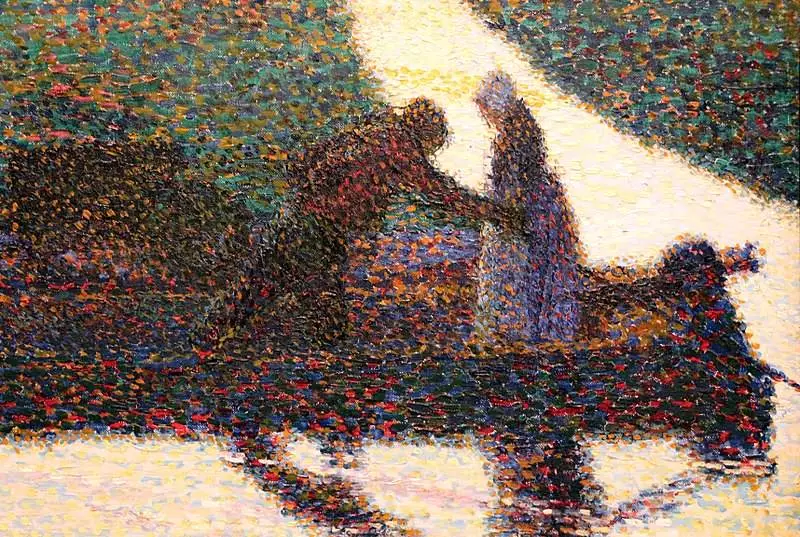The period roughly spanning 1588 to 1672 was one of the most prosperous in Dutch history. Often called The Golden Age, it was a period that largely coincided with the Dutch economic prosperity of the 17th century. Many famous (and nowadays very expensive) works of art come from this period, produced by masters who lived during this time.
The northern Netherlands, which together formed the Republic of the Seven United Netherlands, flourished in (slave) trade, science, and arts.
Think of Rembrandt van Rijn and Jan Steen. These are just two of some exceptional painters who existed after the 17th century. Their unique works of art can be found in the Netherlands and all over the world, attracting millions of visitors to famous Dutch museums.
But the Netherlands is so much more than Van Gogh and Rembrandt. There are so many more Dutch masters — so here are ten of the most famous Dutch painters. 👨🎨
1. Jheronimus Bosch — late 15th century
Jheronimus Bosch, also known as Jeroen or Hieronymus Bosch, was born as Jheronimus van Aken, in Den Bosch around 1450. He died in Den Bosch on August 9, 1516.
The Van Akens were a well-known painting family, so it was no surprise that Jheronimus would go on to become a successful painter. He went down in history as den duvelmakere (the demon maker), because his paintings often depicted demon-like creatures and other satirical images.
Jheronimus was a very meticulous painter and his paintings often contained countless details. One of the early Dutch Renaissance painters, he was also part of a group of painters known as the Vlaamse Primitieven (Flemish Primitives). This is due to the fact that they were most active in Flemish cities such as Bruges, Ghent, and Brussels.
While he was a brilliant painter, one of his most famous works, “De Tuin der Lusten” which is a “triptych” (three paintings that belong together) some critics have called racist. 😬
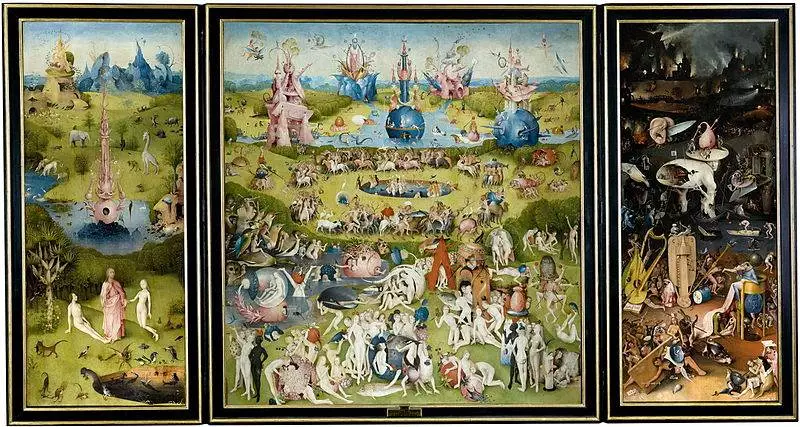
The left panel of the painting depicts paradise or the Garden of Eden (you can tell by Adam and Eve). The middle panel shows the Fall of Man, where people do all kinds of “depraved” things, such as spending time with black people. Finally, on the right panel, you see the Biblical hell.
2. Pieter “Boer” Brueghel de Oude (the Elder) — early 16th century
Pieter Brueghel was born in Breda or Breugel between 1525 and 1530, and he died in Brussels on September 9, 1569. He was a Brabant Renaissance painter who would go on to father many other famous “Bruegel” painters.
He often wrote his name without the “h”, but his sons after him always signed their works with Brueghel. So today he is often just referred to as Pieter the Elder (because that’s easier).
Brueghel owes his nickname, “the farmer”, to the fact that he often disguised himself as a farmer (no, really 😂 ). As “the farmer” he participated in countryside festivities as a source of inspiration for his work.
He painted many pastoral landscapes, in which village scenes, harvests, and other rural themes took centre stage. Shortly after his death, he became famous for his paintings, especially his prints.
Pieter, like many artists of his time, liked to paint scenes with religious tones, making great use of imagery, expressions and verbs. One of his paintings called “The Dutch Proverbs” from 1559 remains very famous to this day and contains about 125 Dutch expressions (some of which are no longer in use, nowadays). You can also view the painting can in Berlin’s Gemäldegalerie.
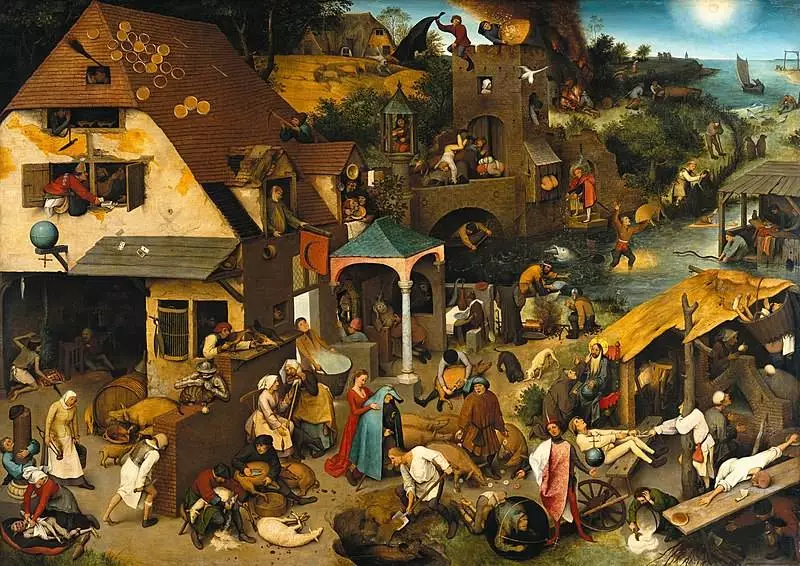
3. Jan Steen — the 17th century
Jan Steen was born in Leiden (hometown shout out 😉 ) sometime between 1625 and 1626, 20 years after Rembrandt. Steen died in Leiden on February 23, 1679.
He painted entirely in the Baroque style, using humour and ordinary people to make his work as lively as possible. His paintings are famous for often showing scenes in an untidy state.
His father was a merchant and brewer and he was the eldest of eight children. He studied at the University of Leiden while also receiving painting lessons from Nicolaus Knupfer, a German painter. He was later be accepted into the Leiden Painters Guild. Throughout his life, he moved around, temporarily living in The Hague, Delft, Haarlem, and Warmond, and eventually return to Leiden.
His work clearly showed that daily life was important to him. One of his most famous pieces, “Het Vrolijke Huisgezin” (The happy family), depicts a chaotic family having fun. You can easily marvel at this painting as well as Rembrandt’s “The Night Watch”, as they both can be viewed in the Rijksmuseum in Amsterdam.
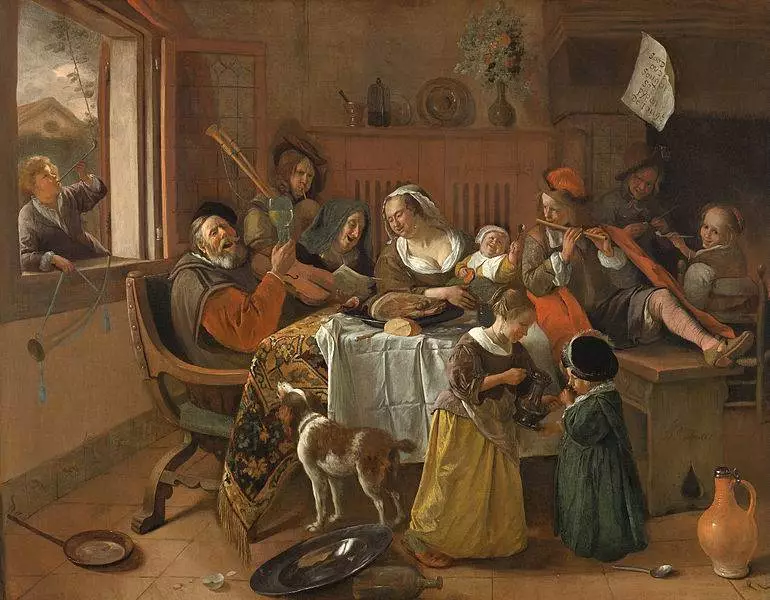
4. Gerard van Honthorst — the 17th century
Gerard was born in Utrecht on November 4, 1592, and died in the same city on April 27, 1656. He followed the painter Caravaggio and, as a result, was often called a “Utrecht Caravaggist.”
He also drew a lot of inspiration from the work of Antoon van Dyck. As a young man, he travelled to Italy to hone his craft in the great art cities of Venice, Florence, and Rome. On his return, he joined the Utrecht Painters Guild (an important step if he wanted to legally sell his paintings).
He received major commissions to produce some impressive works of art, some of which were from the English King Charles I and the Danish king, Christian IV. He also became court painter to Stadtholder, William II.
His popularity somewhat declined in 1640 and he began to paint less often. He was only 48 at the time but he had already seen much of Europe during his career. He passed away sixteen years later.
One of his famous paintings called “De Koppelaarster” (The Matchmaker) was painted in 1625 and can still be admired in the Central Museum in Utrecht.
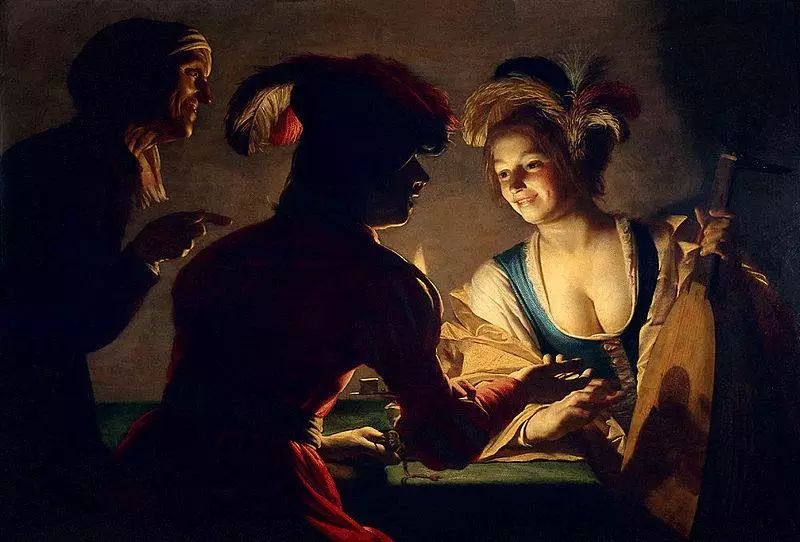
5. Albert Cuyp — the 17th century
Albert Cuyp (after which the Albert Cuyp market in Amsterdam is named) was born on October 20, 1620, in Dordrecht, and died on November 15, 1691. He was also one of the great painters of the 17th century, but a little different from the previous ones.
Albert was mainly a landscape painter. He came from a famous painting family and became particularly known for his landscapes of the Dutch countryside in the early morning light or in the afternoon. He inherited a large sum of money which allowed him to completely pursue his dream job.
Very little is known about his life, other than that he was most active between 1639 and 1660. He was also a devoted Calvinist, and this is perfectly reflected in the fact that he seemed not to own paintings by other artists — at least none were found in his house after he died. Spending money on purely aesthetic matters is not a Calvinistic trait!
One of his famous vistas is the Rivierlandschap met Ruiters (River Landscape with Riders). It’s a panorama of a meandering river with two riders resting their horses. This painting is currenlty in the Amsterdam Rijksmuseum.
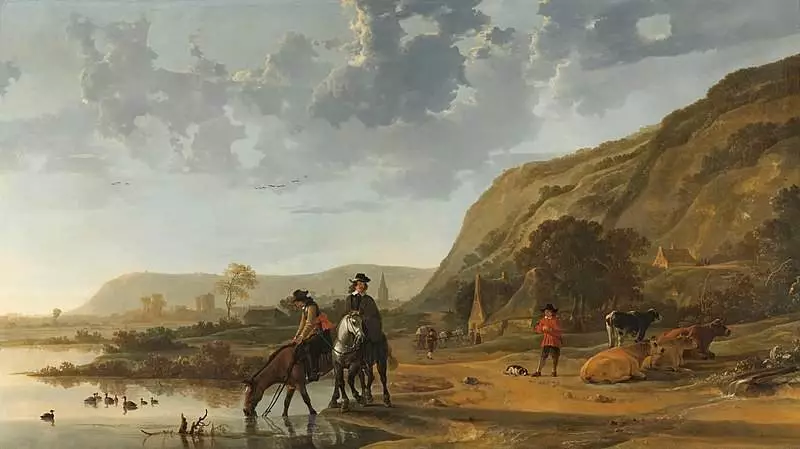
6. Johannes Vermeer — the 17th century
Johannes Vermeer was born in Delft on October 31, 1632, and buried in Delft on December 15, 1675. Vermeer, together with Jan Steen and Rembrandt van Rijn, is probably one of the most famous Dutch painters, certainly from the period of the prosperous 17th century.
He was probably from a Reformed family but became a Roman Catholic in order to be able to marry his sweetheart, Catharina Bolnes. They had eleven children, ten of which he would never see fully grow up. He died in the year 1675 when the city collapsed in The Hollandse Oorlog (Dutch War).
In his lifetime, he produced about 45 paintings (which was not as many as Rembrandt) mostly because he probably worked alone and didn’t have students and helpers like other painters of his time. 👀
Unfortunately, like many painters of his time, he was underappreciated while he was alive. However, his paintings saw a rise in popularity over the 19th century. The sale of “De Melkmeisje” (the Milkmaid), one of his famous works, was so significant that it was discussed in the Dutch House of Representatives.
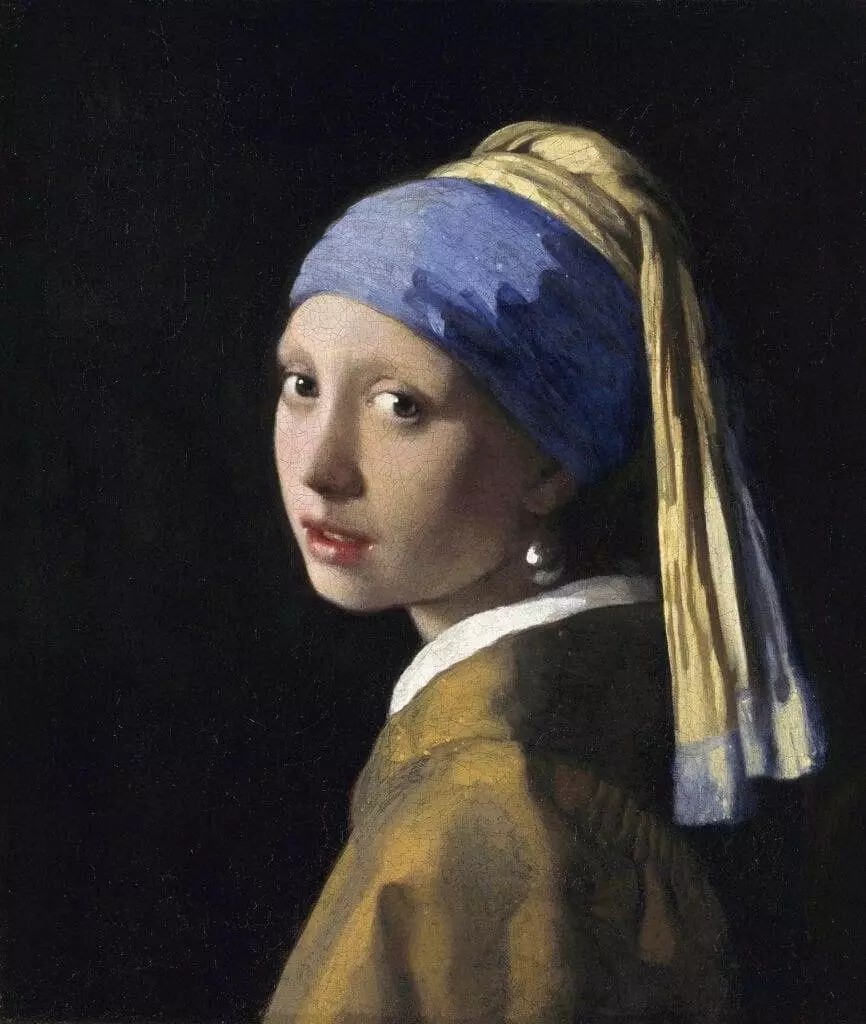
However, the “Meisje met de Parel” (Girl with a Pearl Earring) is probably his most famous painting. This is perhaps due to the book Tracy Chevalier wrote about it (and was later made into a film, starring Colin Firth and Scarlett Johannson 🎬 ).
This work of art was painted sometime between 1665-7 and is currently in The Mauritshuis in The Hague. It’s a “tronie”, which is a painting of a face that contains a distinctive facial expression or character. Back then, models were often anonymous, and so is the girl with the pearl earring.
7. Rembrandt van Rijn — the 17th century
There’s no way you’d have a top ten famous painters in the Netherlands without having Rembrandt on the list! Rembrandt Harmenszoon van Rijn was born in Leiden on July 15, 1606 (or 1607) and died in Amsterdam on October 4, 1669.
He is one of the most important painters of the 17th century, and also a prolific one; producing over 300 paintings, 300 etchings, and about two thousand drawings.😱 “The Night Watch” (painted in 1642) remains perhaps one of his most famous works.
Like Gerard Honthorst, he was influenced by the Caravaggists, which gave his work baroque touches. Rembrandt’s manipulation of light and his perfect use of sharp contrasts is truly something to behold. His paintings are often “dramatic” to the viewer.
Rembrandt mainly painted portraits and historical stories and scenes. He even made a number of self-portraits, something few painters openly admitted. He also gave important people in his life a role in some of his paintings, such as his wife Saskia van Uylenburgh, his son Titus van Rijn, and even his housekeepers and friends.

“De Nachtwacht “(The Night Watch) is a painting on an enormous canvas and can be viewed in the Rijksmuseum in Amsterdam. Interestingly, all the people who contributed to the price of this masterpiece are depicted in the painting, their size mostly depending on the amount they paid him.
The most prominent figures are Captain Frans Banninck Cocq, Lord of Purmerlandt and Ilpendam, Lieutenant Willem van Ruytenburch, and Lord of Vlaerdingen. Another interesting fact is that, at the time, Rembrandt’s clients on the painting were not at all satisfied with the result. Yet, today, the painting is one of the most popular in the world!
8. Vincent van Gogh — the 19th century
There is so much love for Vincent van Gogh outside of these shores, and the same can be said of Rembrandt van Rijn. So it wouldn’t make much sense to have a top ten without him.
Vincent was born in Zundert on March 30, 1853, and died in Auyers sur Oise, France on July 29, 1890. He worked as a Post-Impressionist, an art movement that (unsurprisingly) succeeded Impressionism.
He was a major influence on later abstraction painting. The Van Gogh Museum in Amsterdam was built in his honour. However, like many of his predecessors, Vincent was not recognised for his genius during his lifetime. He only sold one painting, De Rode Wijngaard (The Red Vineyard), for 400 francs, just before his death!
He produced all of his (later famous) works in just ten years. Plagued by psychiatric illness throughout his life, he committed suicide in 1890. Evidence suggests that he had what we now refer to as bipolar disorder, a chronic mental illness thought to affect many creative people.
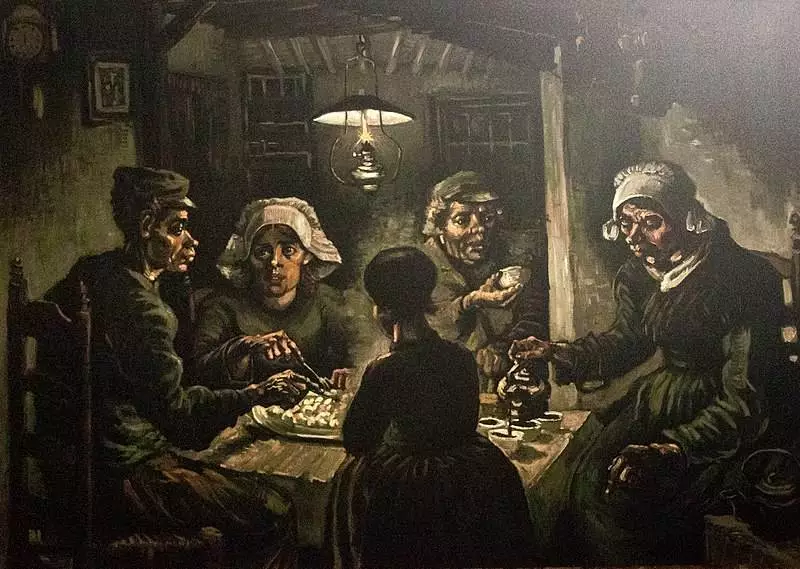
Here we see the “Aardappeleters”(Potato Eaters), one of his early paintings (1885). It’s a melancholy, dark painting that oozes poverty and laziness. You can find this excellent example of a painted depression in the Van Gogh Museum.
Van Gogh’s style, and that of the Post-Expressionists in general, is characterised by the thick brushstrokes. It also lacks the ornate detail and precision of brushwork of painters from previous centuries. He was a truly gifted soul and, whatever your opinion of his work is, no one can deny that it has left a deep impression on the art world.
9. Jan Toorop — the turn of the century
Jan Theodorus Toorop was born in the Javanese town of Poerworedjo on December 20, 1858, and died in The Hague on March 3, 1928. He was one of the most famous painters of the period around the turn of the 20th century.
He had an impressionist style in his younger years, although he also often used Pointillism (painting by just adding dots). Besides painting, he also worked on ceramics, made advertising posters and book bindings. Today we often associate him with the Art Nouveau movement, although he probably never used those terms himself.
One of his famous works, “Broek in Waterland,” looks much better from a distance. Up close it is nothing but just dots, and from afar, a beautiful water landscape at dusk. This work is on display at the Indianapolis Museum of the Arts, Indianapolis, United States.
10. Piet Mondrian — the 20th century
Pieter (Cornelis) Mondriaan was born in Amersfoort on March 7, 1872, and died on February 1, 1944, in New York. He was a painter as well as an art theorist, and one of the pioneers in abstract art painting (like Pablo Picasso).
His geometric and abstract work was infamouse and, therefore, was a huge source of inspiration for architecture as well as other designers.
One of his most famous works is very unoriginally called Tableau 1 and was painted in 1921. There are a dozen other tableaux and compositions (all numbered) made by Mondrian that all, more or less, look alike. He was one of the first to dare to create and sell abstract representations of colour, and will always be remembered in history as a pioneer and “the father” of abstract art.
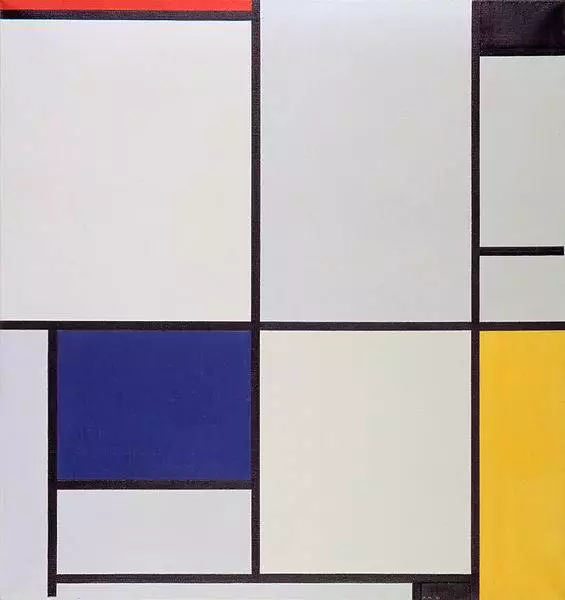
The Netherlands definitely has so many famous painters whose works sit in countless museums scattered all over the country. Some of these museums draw millions of visitors each year.
While these painters are no more, their works lay bare their lasting legacies. Each piece tells a story of love, war, religion, confusion, poverty, and every other human emotion or experience that they witnessed. To gaze upon their work is to enjoy stimulating beauty and the unique product of human genius.
Which Dutch painter and museum is your favourite? Let us know how their paintings made you feel in the comment.
Feature Image: Sailko/Wikimedia Commons/CC3.0
Editor’s Note: This article was originally published in May 2021, and was fully updated in November 2021 for your reading pleasure.



